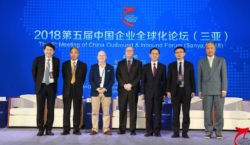The Asian economy has been on the rise in recent years. While many factors have contributed to this growth, globalization is undoubtedly one of the biggest players. By opening up their economies to foreign trade and investment, Asian countries have capitalized on the opportunities of being part of a globalized world. This has led to more jobs, higher incomes, and faster economic growth.
So, how has globalization helped the Asian economy grow? Let’s take a closer look.

Impact of Open Shipping Routes and Trade Agreements
Open shipping routes and trade agreements have also played a role in promoting globalization. Not only has this made it easier for goods and services to move around the world, but it has also helped to reduce the cost of doing business. Here are ways that open shipping routes and trade agreements have improved Asian economies:
Attracted Foreign Investment Into Asia
This investment has taken many forms, from direct investment by foreign companies to establishing joint ventures between Asian and foreign firms. This investment has helped finance the growth of Asian economies and bring new technologies and management practices to the region. In addition, free trade agreements have allowed investors to be confident that their products will be able to reach their intended markets without facing significant barriers.
Lowered the Cost of Living
By making it easier for goods and services to move between Asian countries, open shipping routes and trade agreements have helped to lower the cost of living in Asia. Businesses can source inputs from multiple countries, reducing production costs. As a result, consumers have more disposable income to spend on other goods and services.
Improved Infrastructure
In many countries, improved infrastructure is essential for economic development, allowing businesses to operate more efficiently and connect with markets domestically and internationally. When trade barriers are lowered and shipping routes are opened up, it becomes much easier to move goods and materials around, leading to a major boost in economic activity.
Benefits of the Global Market on the Asian Population
Improved Standard of Living
There has been an increase in trade between Asian countries and the rest of the world. This trade has resulted in an influx of money into Asian countries, which has, in turn, led to an improvement in the standard of living for many people; for example, better healthcare and education.
Greater Economic Opportunities
As trade between Asian countries and the rest of the world has increased, so too have business opportunities. In particular, small businesses have had more opportunities to get started and grow. There is now a larger market for goods and services from Asia.
Increased Cultural Understanding
As trade between different cultures increases, so does communication and understanding. People from different parts of Asia can now learn more about each other’s cultures and customs. In addition, people from other parts of the world can learn about Asian cultures more easily.
Globalization has Improved Money Transfers Between Countries
Globalization has significantly impacted the Asian economy, particularly money transfers between countries. In the past, sending money from one country to another was a time-consuming and expensive process. However, thanks to the proliferation of online money transfer services, it’s now possible to send money almost instantaneously and at a fraction of the cost. Based on Compare The Market International Money Transfer statistics, Asia sends about $15.135 billion and receives approximately $18.294 billion in remittances yearly. This has made it much easier for businesses in Asia to trade with each other and has also made it easier for people to send money to family and friends who live in different countries.

As a result, globalization has helped to stimulate economic growth in Asia by making it easier for people and businesses to move money around.
The Future of an Integrated Global Market and How Asia Can Play a Role in This

Across Asia, globalization is associated with economic growth, modernization, and opportunity. The region has recently been a major driver of global economic expansion, and is expected to account for more than half of the world’s GDP growth by 2040. And Asian economies are projected to outpace the rest of the world in the years ahead. The rise of Asia has been propelled by several factors, including the region’s vast population and burgeoning middle class, rapid urbanization, and increasingly open economies. But globalization has also played a critical role in spurring Asia’s ascent.
Asia is poised to play an even more significant role in the global economy. The region is home to some of the world’s fastest-growing economies and most dynamic corporations. And it’s quickly emerging as a center of innovation, with leading firms developing new technologies and business models adopted worldwide. As Asian economies continue to integrate with the global economy, they will play an increasingly important role in shaping the future of globalization.
Globalization has had a positive impact on the Asian economy. It has stimulated economic growth and modernization and provided small businesses opportunities to start and grow. In addition, it has helped to increase cultural understanding and improve money transfers between countries. As Asia continues to integrate with the global economy, it is poised to play an even more significant role in shaping the future of globalization.

